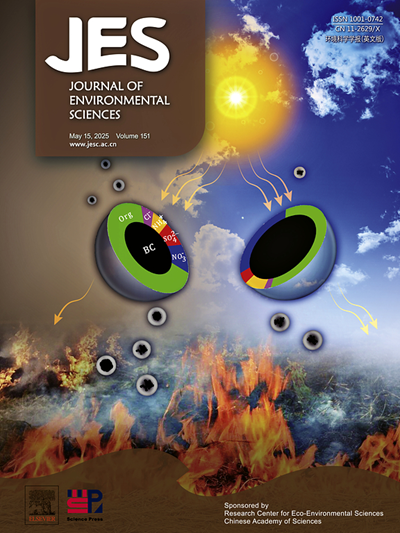Effectiveness of various chemical leaching systems in the remediation of chromium-contaminated soil and their impact on chromium speciation
IF 5.9
2区 环境科学与生态学
Q1 ENVIRONMENTAL SCIENCES
引用次数: 0
Abstract
Chemical leaching techniques have been proven effective in removing heavy metal contaminants from soil using various leaching agents. Previous research has shown that both single-agent and composite leaching systems have been applied for the remediation of chromium-contaminated soils, with varying degrees of success depending on soil type and contaminant form. However, the removal rate of total chromium (Cr) and hexavalent chromium (Cr(VI)) often fluctuates based on the chemical composition of the leaching agents, as well as the soil's physicochemical properties, such as pH and Cr speciation stability. Therefore, this study investigates the effectiveness of 20 composite leaching systems, including deionized water, lime water, calcium chloride, sodium carbonate, and sodium phosphate, through soil column leaching tests. The aim was to evaluate their impact on soil pH, total Cr, and Cr(VI) removal, and to examine the transformation of various Cr species during the leaching process. Results reveal that lime water and sodium phosphate were particularly effective in stabilizing Cr(VI) and neutralizing soil pH, while total Cr removal amount ranged from 197.4 mg/kg to 1671.6 mg/kg and Cr(VI) removal amount ranged from 113.2 mg/kg to 316.8 mg/kg. We also find that using 0.2 mol/L citric acid, 0.1 mol/L hydrochloric acid, and 1.2 mL/g lime solution adjusted soil pH to 7.37, with average removal efficiencies of 34.6 %. for total Cr and 72.7 % for Cr(VI). Overall, our results suggest that the combined use of lime water and sodium phosphate is an effective strategy for remediating chromium-contaminated soil, particularly for stabilizing unleached Cr and adjusting soil pH.

不同化学淋滤系统对铬污染土壤的修复效果及其对铬形态的影响
化学浸出技术已被证明可以有效地利用各种浸出剂去除土壤中的重金属污染物。先前的研究表明,单剂和复合淋滤系统已被应用于铬污染土壤的修复,根据土壤类型和污染物形式的不同,取得了不同程度的成功。然而,总铬(Cr)和六价铬(Cr(VI))的去除率往往会根据浸出剂的化学成分以及土壤的物理化学性质(如pH值和Cr形态稳定性)而波动。因此,本研究通过土壤柱淋滤试验,考察了去离子水、石灰水、氯化钙、碳酸钠、磷酸钠等20种复合淋滤体系的有效性。目的是评估它们对土壤pH值、总Cr和Cr(VI)去除的影响,并检查浸出过程中各种Cr物种的转化。结果表明,石灰水和磷酸钠在稳定Cr(VI)和中和土壤pH方面效果显著,总Cr去除率在197.4 ~ 1671.6 mg/kg之间,Cr(VI)去除率在113.2 ~ 316.8 mg/kg之间。我们还发现,使用0.2 mol/L柠檬酸、0.1 mol/L盐酸和1.2 mL/g石灰溶液可将土壤pH调节至7.37,平均去除率为34.6%。总Cr和Cr(VI)的72.7%。综上所述,石灰水与磷酸钠混合使用是修复铬污染土壤的有效策略,特别是在稳定游离铬和调节土壤pH值方面。
本文章由计算机程序翻译,如有差异,请以英文原文为准。
求助全文
约1分钟内获得全文
求助全文
来源期刊

Journal of Environmental Sciences-china
环境科学-环境科学
CiteScore
13.70
自引率
0.00%
发文量
6354
审稿时长
2.6 months
期刊介绍:
The Journal of Environmental Sciences is an international journal started in 1989. The journal is devoted to publish original, peer-reviewed research papers on main aspects of environmental sciences, such as environmental chemistry, environmental biology, ecology, geosciences and environmental physics. Appropriate subjects include basic and applied research on atmospheric, terrestrial and aquatic environments, pollution control and abatement technology, conservation of natural resources, environmental health and toxicology. Announcements of international environmental science meetings and other recent information are also included.
 求助内容:
求助内容: 应助结果提醒方式:
应助结果提醒方式:


